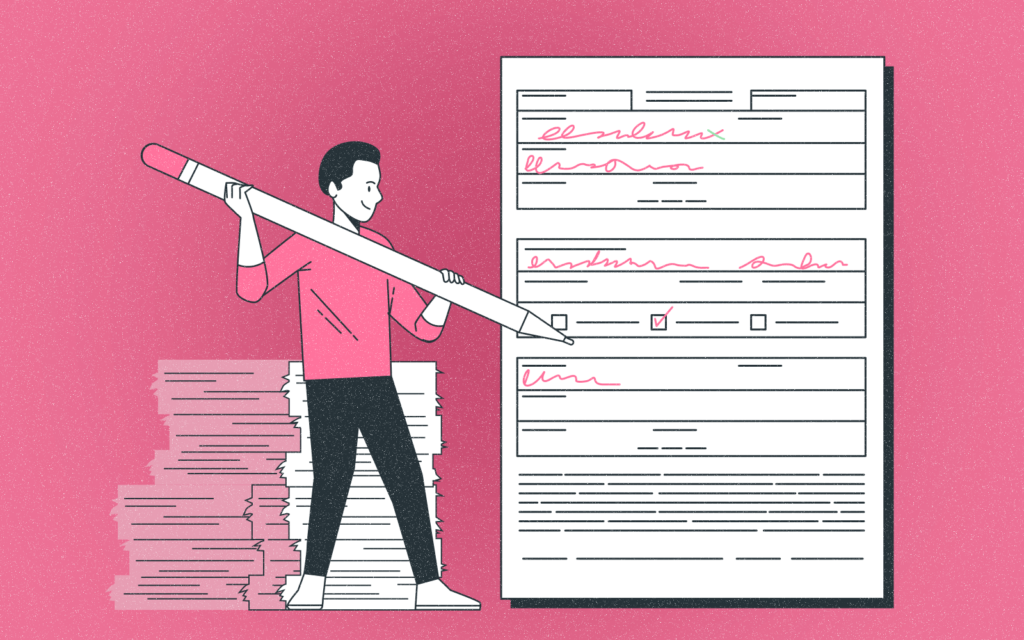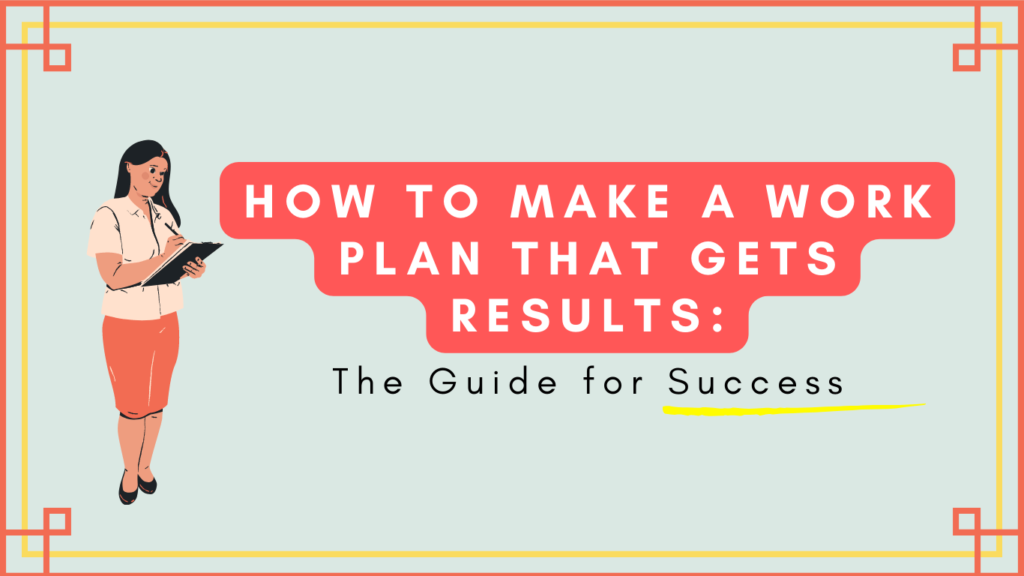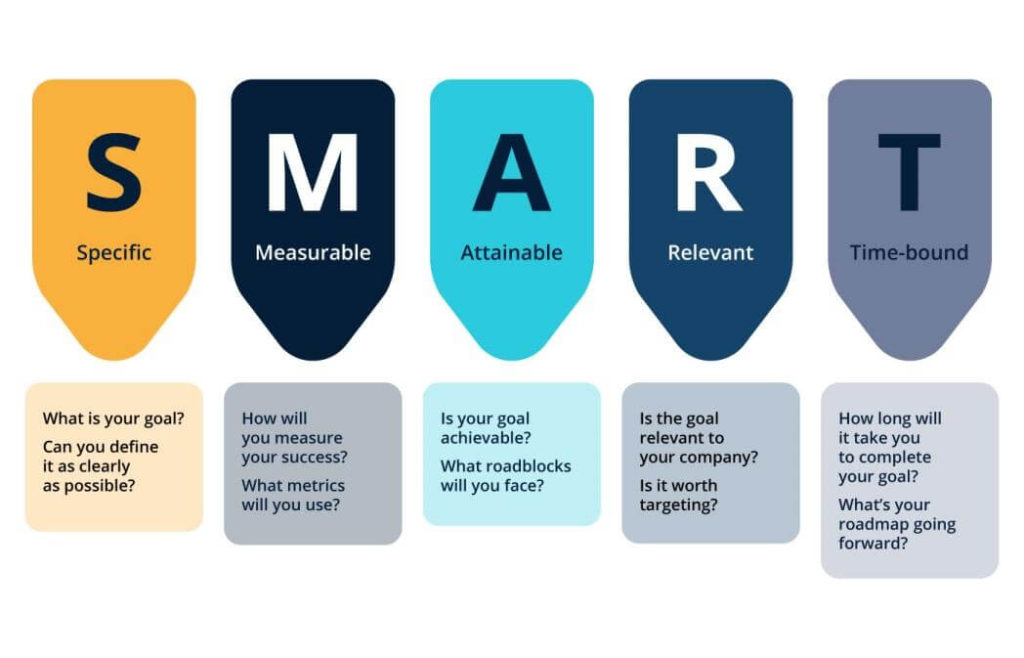How to Write a Work Plan?

Unconsciously, since very little, we have dived through life with plans. First, our parents made plans for us, then at school, our teachers made sure we followed an academic plan to the best of our regard. Everything is planned out either by us or third parties, therefore if you want to be successful, it’s important to have a plan!
A work plan is a document that outlines your goals and the steps you need to take to achieve them. It can be used in any field or industry, whether you’re self-employed or work for a company. In this blog post, we’ll discuss what goes into an effective work plan, and give you tips on how to write one that gets results.
Let’s get started!

Maybe you have landed the job of your dreams or won that funding you always wanted. Congratulations!
But, now what? How do you make sure that all your actions lead to the goals set by you? The answer is very easy and cliché– effective work planning. But, you know, cliché is good because it works, and has been working for a long time.
Let’s dive into the topic to know why and how you can make it work!
What Is an Effective Work Plan?
An effective work plan is a tool that helps you organize your time and resources so that you can achieve your goals. It’s a written (either by hand or digitally) document that outlines your objectives, tasks, and deadlines.
The best way to think of a work plan is as a road map. It shows you the route you need to take to reach your destination (goals). And just like a real road map, it also shows any detours or detours along the way.
Effective work planning contains six key elements:
- Objectives: What are you trying to achieve?
- Tasks: What actions will help you achieve your objectives?
- Deadlines: When do you need to complete each task?
- Responsibilities: Who is responsible for each task?
- Resources: What resources do you need to complete each task?
- Risks: What risks are involved in achieving your objectives?
Now that we know what effective work planning looks like, let’s take a closer look at each of these elements.
Objectives: What are you trying to achieve?
The first step in effective work planning is to identify your objectives. These are the goals you want to achieve within a certain time frame.
Your objectives should be specific, measurable, achievable, relevant, and time-bound (SMART). This means that they should describe exactly what you want to achieve, and when you want to achieve it. For example, an objective might be “to increase sales by 20% within six months.”

Tasks: What actions will help you achieve your objectives?
Once you’ve identified your objectives, the next step is to identify the tasks that will help you achieve them.
For each objective, ask yourself “What do I need to do to achieve this?” and list out all the actions you need to take.
Deadlines: When do you need to complete each task?
The third element of effective work planning is deadlines. For each task on your list, ask yourself “When do I need to complete this by?” and set a deadline.
Your deadlines should be realistic and allow enough time for you to complete the task without rushing. If a deadline is too tight, it can lead to stress and mistakes.
Responsibilities: Who is responsible for each task?
The fourth element of effective work planning is responsibilities. For each task on your list, ask yourself “Who is responsible for this?” and assign responsibility to an individual or team.
It’s important to assign responsibility for each task so that you know who needs to do what, and when they need to do it. This will help ensure that tasks are completed on time and to a high standard.
Resources: What resources do you need to complete each task?
The fifth element of effective work planning is resources. For each task on your list, ask yourself “What resources do I need to complete this?” and identify any resources you’ll need.
Resources can include things like money, materials, equipment, or even people. Make sure you have everything you need to complete each task before you start.
Risks: What risks are involved in achieving your objectives?
The final element of effective work planning is risks. For each objective on your list, ask yourself “What risks are involved in achieving this?” and identify any risks that could impact your ability to achieve the goal.
Risks can include things like financial instability, political unrest, or natural disasters. By identifying risks upfront, you can make contingency plans to mitigate their impact on your objectives.
This looks like a lot of work (pun intended), so why even bother?
The Value Behind a Work Plan
Now that we’ve broken down effective work planning into its key elements, let’s take a step back and look at the big picture.
Why invest the time and effort into creating a work plan? The answer is simple: Effective work planning leads to better results.
A well-crafted work plan will help you:
- Clarify your objectives
- Focus your efforts on tasks that will help you achieve your objectives
- Manage your time effectively
- Stay on track and avoid getting sidetracked
- Hold yourself and others accountable for results
- Communicate your plans to others
- Work more efficiently and effectively
- Achieve better results

As you can see, effective work planning is essential for any individual or organization that wants to achieve success. By taking the time to create a well-crafted work plan, you’ll be setting yourself up for success!
However, if you are still unsure how to start writing your work plan, you have come to the right place! Let’s get started.
Get more out of your business
Get the best employee engagement content every week via mailing list
Creating a Work Plan That Gets Results
Now that we have covered the 101 of effective work planning, it’s time to learn how to create a work plan that actually works!
Specify Project Name, Aim, and Overall Timeline
How would you or your team know what to work on if the document doesn’t have a name? Therefore, the first step to creating an effective work plan is to specify the name of your project, then its aim, and the overall timeline.
Consider the project’s name should be readable, short, and to the point so that everyone understands what it is about at a glance. For example, “Launch New Website” is a much better project name than “Untitled Project #12.”
Briefly describe what the project is about, its purpose or goal, and when you plan to achieve it
This will give your team or you a clear understanding of what needs to be done and when it needs to be done.
- Be as specific as possible when defining your project’s aim: What are you trying to achieve? What outcomes do you hope to achieve?
- Your overall timeline should include milestones and deadlines for each task on your list: This will help you track your progress and ensure that tasks are completed on time.
Determine Your Scope
In scientific research, we call this: delimitation. Meaning that setting boundaries is essential when establishing an effective work plan. You will need to determine what is included in the project and what is out of scope. In short: what can you REALLY control?
This is an important step because it will help you focus your efforts on the tasks that are most important to the success of your project

For example, if you are launching a new website, your work plan should only include tasks related to the launch of the new website. Tasks like designing the website, writing content, and coding should be included; however, tasks like maintaining the website after it launches would be out of scope.
You can always expand the project later if needed, but it is much harder to scale back a project that has gotten out of control. As you determine the scope of your project, be sure to consult with stakeholders to get their input. They will likely have valuable insights that you had not considered!
Define The Objectives
Along with the scope, you must set the objectives. These are two points you can do in unison as they go hand-in-hand.
Without clear objectives, whether they are short, medium, or long-term, it will be difficult to create an effective work plan. Your objectives should be aligned with the overall goals of your organization or project. Don’t forget to be SMART with your goals.
Review and adjust your objectives as needed to ensure that they remain relevant and achievable.
Once you have defined your objectives, you can develop activities and strategies to help you achieve them, which takes us to the next step!
Creating a Task List
An effective work plan requires a clear and concise task list. This list helps you to set priorities and stay on track as you work.
To create a task list, start by reviewing the goals you set above for the project. Then, break down these goals into specific tasks, then make sure to prioritize these tasks.
Try the Eisenhower Matrix for an efficient task prioritization
The Eisenhower Matrix is a simple yet effective tool for task prioritization as it helps you to identify which tasks are urgent and which are not.
To use the matrix, simply draw a four-quadrant grid and label each quadrant as follows and as shown in the image below:
- Quadrant 1: Urgent and Important
- Quadrant 2: Important but Not Urgent
- Quadrant 3: Urgent but Not Important
- Quadrant 4: Not Urgent and Not Important

Then, place each of your tasks into one of the quadrants. Once you have done this, you can begin to work on the most important tasks located in Quadrant 1, and so on!
Assign Responsibilities and Resources
Of course, these tasks won’t be completed by themselves or out of magic, therefore you will need to assign responsibility for each task on your list. This is essential for effective project management and will help ensure that tasks are completed on time and within budget.
Assignments should be based on each individual’s strengths and weaknesses as well as their availability
When assigning responsibility, be sure to include the name of the individual or team responsible for each task, as well as the due date. This will help everyone on your team know who is responsible for what and when tasks need to be completed.
In addition to assigning responsibility, you will also need to assign resources. These can be anything from financial resources to physical resources like office space or equipment.
Risks and Constraints
Risks are potential problems that could occur during the course of your project. For example, if you are launching a new product, a risk might be that the product is not well received by the public.
Constraints, on the other hand, are limitations that could impact your ability to complete the project on time or within budget. For example, a constraint we ALL lived with was the COVID-19 pandemic, which was certainly out of our control, and caused many businesses to reassess their work plans.
And, don’t forget it is not the only “threat” out there! Here you can check how to prepare a risk management plan and business impact analysis!

Both risks and constraints should be identified early on in the project so that they can be managed effectively
Be sure to review your risks and constraints regularly to ensure that they have not changed and that your plan is still on track!
Monitoring and Evaluation
Last but not least, effective work plans need to include provisions for monitoring and evaluation. This means that you will need to set up a system for tracking progress and determining whether or not the project is on track.
There are many different ways to do this, but one simple way is to create a Gantt chart. This chart can be used to track milestones and deadlines for each task in your project.

Another way to monitor and evaluate your project is to hold regular status meetings with your team. These meetings should be used to discuss progress, identify any problems, and make sure that everyone is on track.
Bottomline
Creating a work plan may seem like a lot of work, but it is essential for ensuring that your project is successful. By taking the time to create a detailed and effective work plan, you will be able to keep your project on track and ensure that it is completed on time and within budget.
And most importantly, you and your team end up happy and satisfied with the result! Are you ready to rock your work plan?
-The Monitask Team


